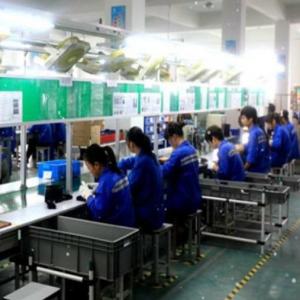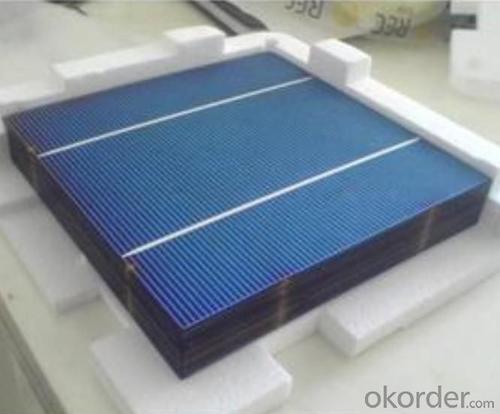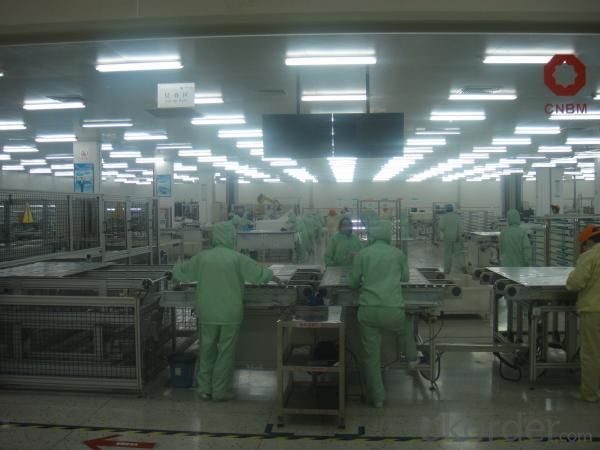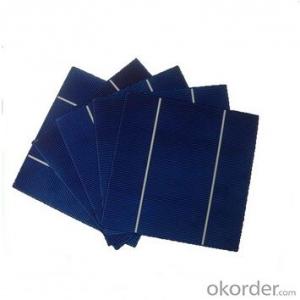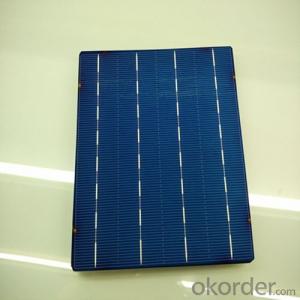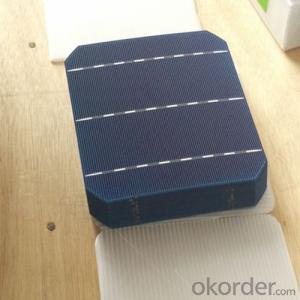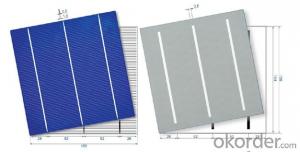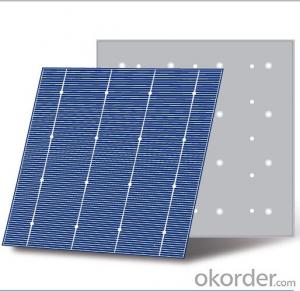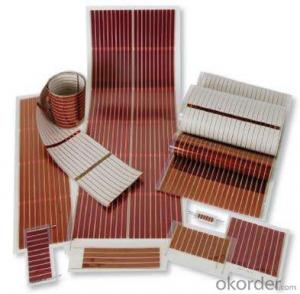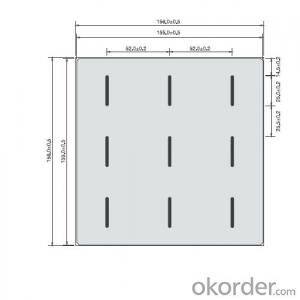Sun Power Solar Cells - High Quality Poly Solar Cell 156mm with TUV, CE Certification
- Loading Port:
- Tianjin
- Payment Terms:
- TT or LC
- Min Order Qty:
- 40000 watt
- Supply Capability:
- 1000 watt/month
OKorder Service Pledge
OKorder Financial Service
You Might Also Like
Details Of Poly Solar Cell 156mm
Specifications Of Poly Solar Cell 156mm
1.Mechanical data and design
Format | 156 mm × 156 mm ± 0.5 mm |
Thickness | 210 μm ± 40 μm |
Front(-) | 1.5mm bus bars (silver),blue anti-reflection coating (silicon nitride) |
Back (+) | 2.5 mm wide soldering pads (silver) back surface field (aluminium) |
2.Temperature Coefficient of Cells
Voc. Temp . coef.%/K | -0.351%/K |
Isc . Temp . coef.%/K | +0.035%/K |
Pm. Temp. coef.%/K | -0.47%/K |
3.Electrical Characteristic
Efficiency (%) | Pmpp (W) | Umpp (V) | Impp (A) | Uoc (V) | Isc (A) | FF (%) |
17.25 | 4.197 | 0.524 | 7.992 | 0.62 | 8.458 | 80.03% |
17 | 4.137 | 0.524 | 7.876 | 0.619 | 8.353 | 80.01% |
16.75 | 4.076 | 0.522 | 7.81 | 0.617 | 8.286 | 79.73% |
16.5 | 4.015 | 0.518 | 7.746 | 0.613 | 8.215 | 79.73 |
16.25 | 3.955 | 0.515 | 7.683 | 0.61 | 8.144 | 79.61% |
16 | 3.894 | 0.512 | 7.613 | 0.608 | 8.075 | 79.31% |
15.75 | 3.833 | 0.51 | 7.534 | 0.605 | 8.058 | 78.62% |
15.5 | 3.772 | 0.508 | 7.453 | 0.604 | 8.02 | 77.87% |
15.25 | 3.771 | 0.505 | 7.35 | 0.604 | 9.997 | 76.83% |
15 | 3.65 | 0.503 | 7.271 | 0.604 | 7.989 | 75.64% |
14.5 | 3.529 | 0.499 | 7.067 | 0.604 | 7.988 | 73.14% |
14 | 3.407 | 0.499 | 6.833 | 0.604 | 7.833 | 72.01% |
4.Intensity Dependence
Intensity [W/m2] | Isc× [mA] | Voc× [mV] |
1000 | 1.00 | 1.000 |
900 | 0.90 | 0.989 |
500 | 0.50 | 0.963 |
300 | 0.30 | 0.939 |
200 | 0.20 | 0.920 |
Advantage Of Poly Solar Cell 156mm
1: High quality cell, Level A cell (14%—17.5%)
2.Dimensione:156*156mm Diagonal:200mm
3: Qualified certification: TUV,CE certification.
4: Warranty: five years for whole unit
Usage/Application Of Poly Solar Cell 156mm
Packaging & Delivery Of Poly Solar Cell 156mm | |
Packaging Detai | Packaging Detail:Export Carton and Pallet or under customer request. |
Delivery Detail:10-20days | |
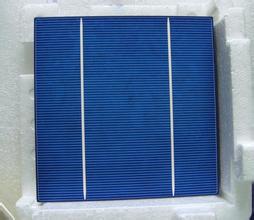
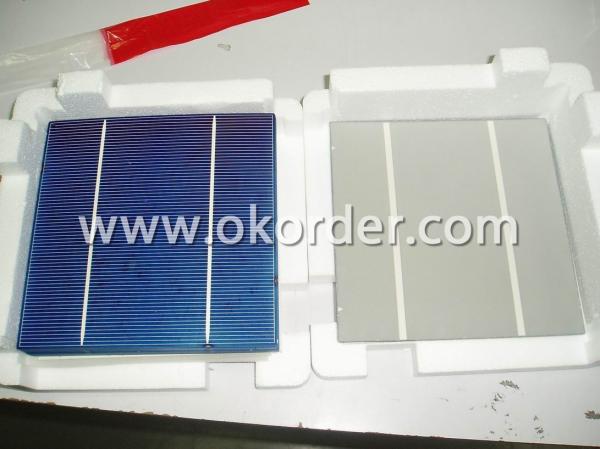

Latest research progress of Polymer Solar Cells
Compared with mature inorganic silicon solar cells from its conversion efficiency and stability, Polymer Solar Cells is still in the development stage. However, due to the advantages of having a light weight, low cost, flexible devices can be made, and a wet film formation (spin coating, ink jet printing and screen printing) technology and other large area, the organic polymer solar cells become one of the hottest areas of research.
Photoelectric conversion efficiency of solar cells is determined by the open-circuit voltage of the battery, short-circuit current, and fill factor, so how to improve the aforementioned three factors, the conversion efficiency of solar cells is a key factor in increasing.
A joint research team from the University of California and the University of Cambridge consisting proposed PIPCP in recent journal Advanced Materials: PC61BM conjugated polymer ─ fullerene heterojunction solar cells latest research body, proposed a lifting battery open circuit voltage the method can significantly improve the photoelectric conversion efficiency of the device.
The paper pointed out that when the organic material absorbed photon excited state is formed, the excited state is seen as the static electricity in a combination of electrons and holes, known as excitons. Since the exciton properties of the organic semiconductor, the driving force of the charge separation in a solar cell is the donor and acceptor materials, the energy difference. Electronic circuit voltage depends on solar photovoltaic bandgap and bandgap is the recipient of the lowest unoccupied molecular orbital (LUMO) and to the body between the highest occupied molecular orbital (HOMO) energy difference.
Receptor lowest unoccupied molecular orbital wave function of the body and to the highest occupied molecular orbital overlap between the interface can create a form, this interface morphology and related electronic open-circuit voltage, called the charge transfer state (CTS). In fixed offsets, energy and electronic charge transfer state open circuit voltage linear relationship, even with the temperature close to the same value obtained when 0K, which shows the energy charge transfer state may limit the open circuit voltage of the electron. By reducing energy loss in the electronic band gap to the open circuit voltage, can effectively enhance the photoelectric conversion efficiency of the organic polymer solar cell.
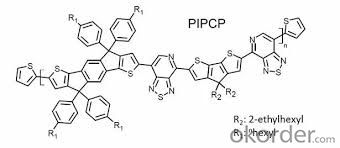
- Q: Can solar cells be used in remote monitoring systems?
- Yes, solar cells can be used in remote monitoring systems. Solar cells provide a reliable and sustainable source of energy, making them ideal for powering remote monitoring systems that may be located in areas without access to an electricity grid. They can efficiently convert sunlight into electricity, allowing these systems to operate continuously and independently. Additionally, solar cells are low maintenance and can withstand harsh environmental conditions, making them well-suited for remote monitoring applications.
- Q: Can solar cells be used in portable devices?
- Yes, solar cells can be used in portable devices. They can be integrated into various portable devices such as smartphones, tablets, and portable chargers to harness sunlight and convert it into electrical energy, providing a sustainable and renewable power source for these devices.
- Q: How do solar cells convert sunlight into electricity?
- Solar cells convert sunlight into electricity through a process called the photovoltaic effect. When sunlight hits the solar cell, the photons from the sunlight energize the electrons in the cell's semiconductor material, causing them to break free from their atoms. This creates an electric current, which can then be harnessed and used as electricity.
- Q: How do solar cells perform in areas with high levels of noise pollution?
- Solar cells are not affected by noise pollution as it has no impact on their performance. Noise pollution does not interfere with the ability of solar cells to convert sunlight into electricity, making them a reliable energy source even in areas with high levels of noise pollution.
- Q: How do solar cells perform in coastal areas?
- Solar cells perform well in coastal areas due to the abundance of sunlight and the absence of obstructions that could potentially shade the panels. Additionally, the coastal breeze helps to keep the solar panels cool, preventing overheating and improving their overall efficiency.
- Q: Can solar cells be used in recreational vehicles or boats?
- Yes, solar cells can be used in recreational vehicles or boats to generate electricity, making them a sustainable and efficient power source for these vehicles.
- Q: Can solar cells be used to power refrigeration systems?
- Yes, solar cells can be used to power refrigeration systems. Solar cells convert sunlight into electricity, which can then be used to power various appliances, including refrigeration systems. This is particularly useful in off-grid or remote areas where access to conventional power sources may be limited.
- Q: How do solar cells perform in areas with high humidity and saltwater exposure?
- Solar cells generally perform well in areas with high humidity and saltwater exposure. However, prolonged exposure to high humidity and saltwater can potentially degrade the performance and lifespan of solar cells. The humidity can cause moisture to accumulate on the surface of the solar panels, leading to reduced efficiency. Additionally, saltwater exposure can corrode the metal components of the solar cells, further impacting their performance. To mitigate these issues, manufacturers often use corrosion-resistant materials and coatings for solar panels deployed in coastal regions or areas with high humidity. Regular maintenance and cleaning can also help ensure optimal performance in such environments.
- Q: Can solar cells be used in drones?
- Yes, solar cells can be used in drones. Solar-powered drones have been developed and are being used for various applications. They use solar cells to convert sunlight into electrical energy, which can be used to power the drone's motors and other electronic components. This allows for longer flight times and reduces the need for frequent battery replacements or recharging.
- Q: How do solar cells perform in high-altitude locations?
- Solar cells perform well in high-altitude locations due to several factors. Firstly, at higher altitudes, there is often less air pollution and cloud cover, leading to more sunlight reaching the solar cells. Additionally, the thinner atmosphere at high altitudes allows for a higher concentration of solar radiation, resulting in increased energy generation. Finally, the cooler temperatures at higher altitudes can actually improve the efficiency of solar cells, as they tend to perform better in lower temperatures. Overall, solar cells are highly effective in high-altitude locations, making them an ideal renewable energy solution in such areas.
1. Manufacturer Overview
| Location | SanShui City, Guang Dong, China. |
| Year Established | 2009 |
| Annual Output Value | Above 10 billion RMB |
| Main Markets | Mid East;Western Europe;North America;Southeast Asia |
| Company Certifications | TUV ISO9001;SGS |
2. Manufacturer Certificates
| a) Certification Name | |
| Range | |
| Reference | |
| Validity Period |
3. Manufacturer Capability
| a) Trade Capacity | |
| Nearest Port | Zhuhai, Foshan |
| Export Percentage | 0.4 |
| No.of Employees in Trade Department | about 600 |
| Language Spoken: | English;Chinese; |
| b) Factory Information | |
| Factory Size: | 66666.7m2 |
| No. of Production Lines | 12 |
| Contract Manufacturing | OEM Service Offered;Design Service Offered |
| Product Price Range | USD 0.3-0.45/Wp |
Send your message to us
Sun Power Solar Cells - High Quality Poly Solar Cell 156mm with TUV, CE Certification
- Loading Port:
- Tianjin
- Payment Terms:
- TT or LC
- Min Order Qty:
- 40000 watt
- Supply Capability:
- 1000 watt/month
OKorder Service Pledge
OKorder Financial Service
Similar products
Hot products
Hot Searches
Related keywords

